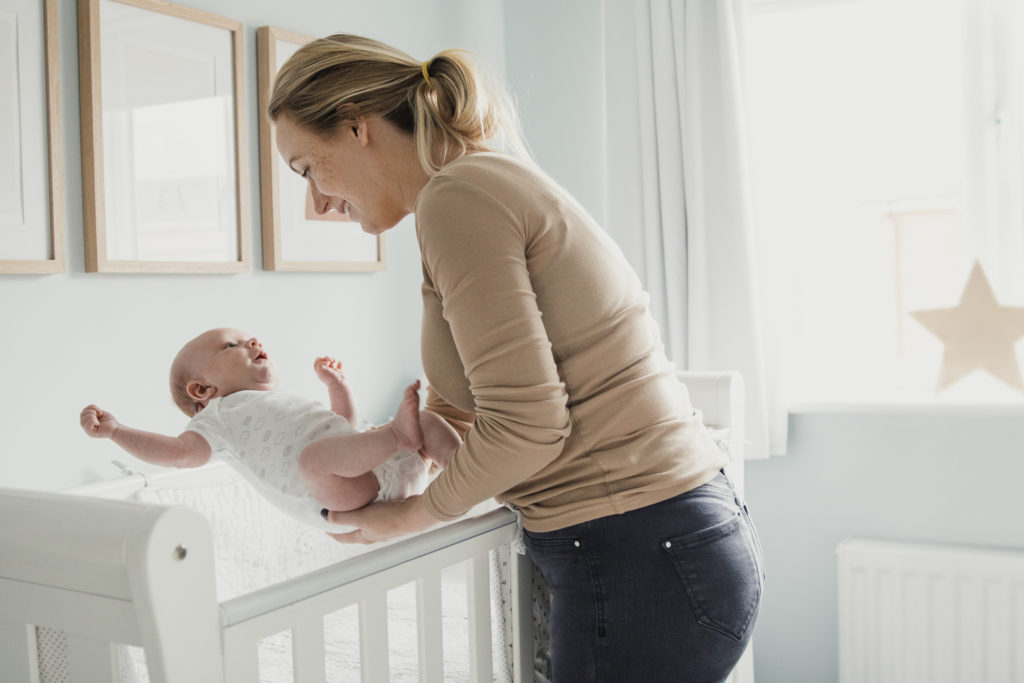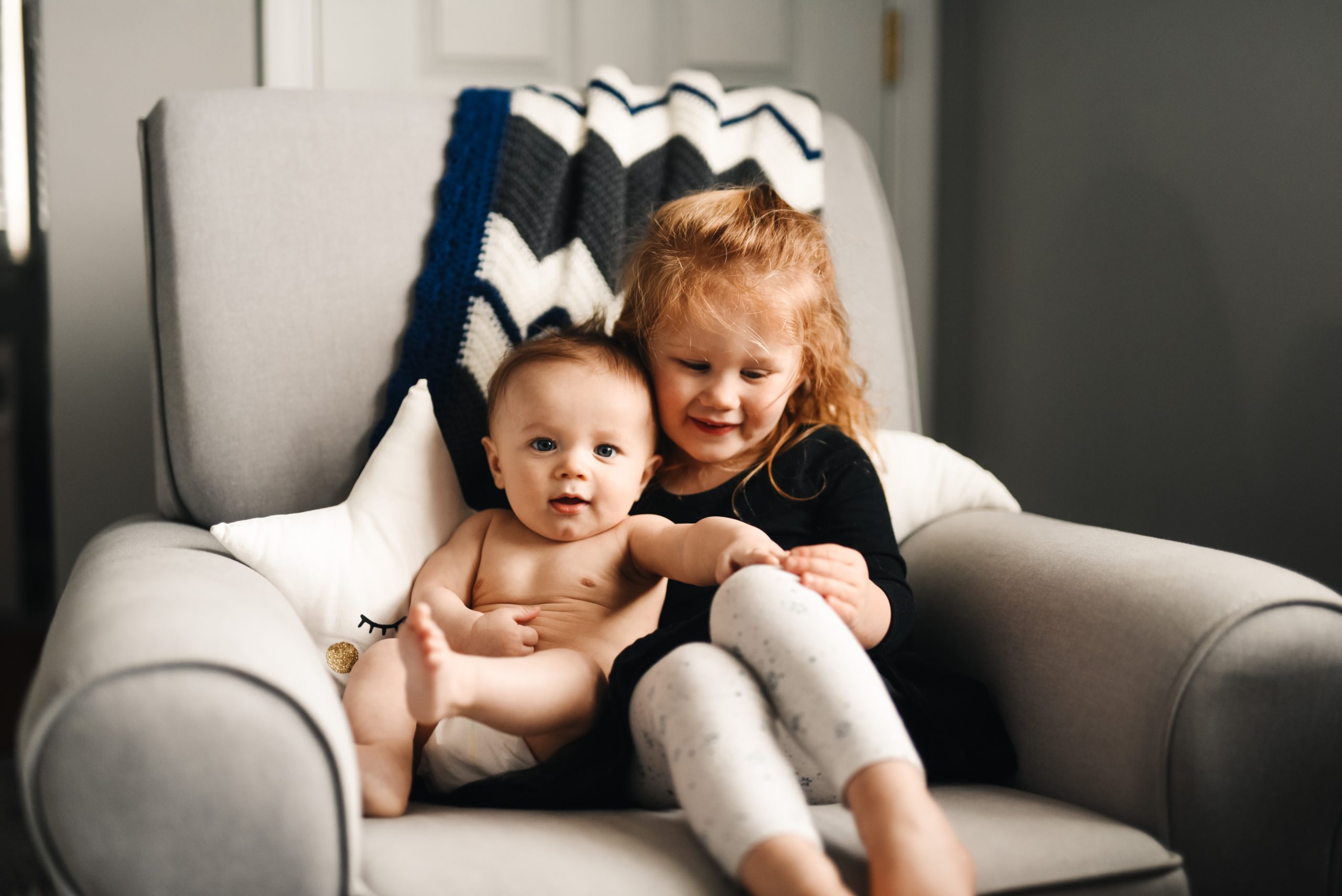Why do some parents hear the phrase “Sleep Training” and automatically think: “Cry it Out – I’ll never do that to my child” while others automatically think: “Sleep Training was the best thing that ever happened to me”? It’s partly because people have different definitions of Sleep Training and have different personal experiences with it. But it’s mostly because Sleep Training is more about the goal and doesn’t represent a specific method to get to that goal.
What Exactly Is Sleep Training?
Let me explain a bit further. The goal of Sleep Training is most often to get a child to be able to fall asleep independently (meaning without the aid of a parent rocking, nursing, singing, etc.). The natural consequences of a child being able to fall asleep independently include less bedtime battles, less night wakings, a more well rested child, not to mention less stress and more sleep for parents. Some underestimate the value of long, quality sleep. Children who regularly sleep well are more self-assured, happy, less demanding, and more sociable. They are more alert and have higher attention spans and therefor become faster learners. Sleep Research has even shown, “children with healthy sleep patterns clearly had higher IQs than children who did not sleep well”. (Babywise, 2019)
All of this to say, children need the best sleep possible. Children over 4 months of age can get the best sleep if they are independent sleepers. How do you get your child to become an independent sleeper? DING! DING! DING! Sleep Training! Notice, how I did not say, “You let them cry it out”.

The Methods
Here are examples of 4 completely different Sleep Training Methods
that may be the right fit for your family.
The Extinction Method: Okay, this one really is “cry it out”
Best For:
· Young babies: 3-6 months
· Parents that want to just get the Sleep Training process over with
· Quick results· Parents okay with hearing crying
Bad For:
·Older babies or toddlers
· Parents that hate to hear crying
· Parents that struggle to commit
The Shush Pat Method: Hands-on and Supportive
Best For:
· Very young babies to help ease into sleep independence (1-3 months)
· Babies to gently sleep train (3-8 months)
· Parents who want to comfort their crying baby
Bad For:
· Older babies or toddlers
· Parents looking to Sleep Train quickly and easily
The Check and Console Method: Balance of letting baby try and providing comfort
Best For:
· Babies that are in cribs (3-18 months)
· Parents who are okay with some crying
· Parents who want to limit length of crying
· Parents who have willpower and can stick to a plan
· Quick results
Bad For:
· Toddlers in their own bed
· Parents that don’t want to hear any crying
The Chair Method: Slow fading of parent support
Best For:
· Babies through toddlers (4 months – 4 years+)
· Parents who want to stay in the room to help their crying child
· Parents who want to ease into sleep independence
· Toddlers who may have some separation anxiety
Bad For:
· Parents looking for quick and easy results
· Babies who may be too stimulated by their parents being in the room
There are other Sleep Training methods to consider as well and sometimes Sleep Consultants may even design a Sleep Plan that uses multiple methods or adds in an additional strategy to an already existing method to ensure it’s the perfect fit for your family.

So here are the two paths you can take
One, you can continue to research two or more of these Sleep Training methods on your own. Likely you can read a book or two, research up to date studies on the methods online, decide which method you want to use, create your sleep goals, then write a 1-2 week Sleep Plan to implement. See if you get the results you were hoping for. Make changes as needed and keep trying!
Two, you could hire a Sleep Consultant. Their entire job is to gather a ton of information about your child and your family and then write a Sleep Plan (a step by step guide) specific to your child. At Nights & Naps Pediatric Sleep Consulting, we offer an All Inclusive virtual Sleep Consulting service that begins with a detailed Sleep Assessment that we use to create an individualized Sleep Plan for your family. Then we work together for 3 weeks through phone consultations and daily voice/text support to ensure success and to troubleshoot any challenges that arise along the way. Last, you have access to one year of follow up support from sleep consultants on our team so that even if your little one falls into a sleep regression, we can help you get back on track without you having to pay another dime. Learn more about our program HERE or take our quiz: Should I Hire a Sleep Consultant?
Let’s be honest, you may choose path one and end up on path two and that’s okay too.
Resources
A lot of this information comes from my training through the Center for Pediatric Sleep Management
Bucknam, Robert, and Ezzo Gary Ma. On Becoming Babywise: Giving Your Infant the Gift of Nightime Sleep – 25th Anniversary Edition. Revised&Updated Version, Hawksflight & Associates, Inc, 2017.
M.D., Weissbluth Marc. Healthy Sleep Habits, Happy Child, 4th Edition: A Step-by-Step Program for a Good Night’s Sleep. Expanded, Revised, Ballantine Books, 2015.West, Kim, and Joanne Kenen. The Sleep Lady®’s Good Night, Sleep Tight: Gentle Proven Solutions to Help Your Child Sleep Well and Wake Up Happy. Updated, Expanded, Vanguard Press, 2009.
